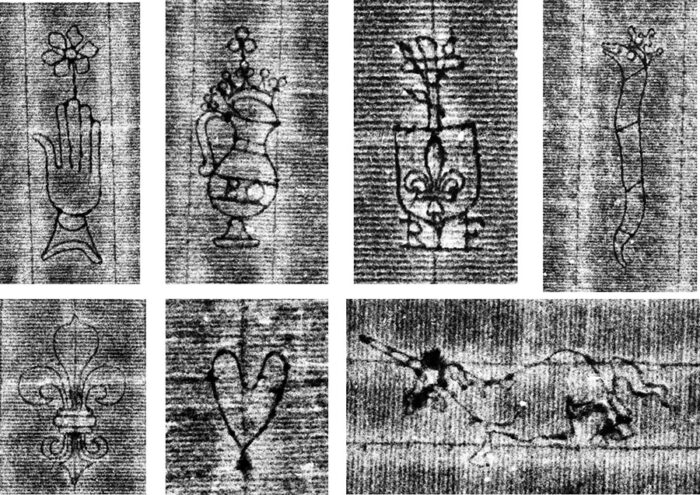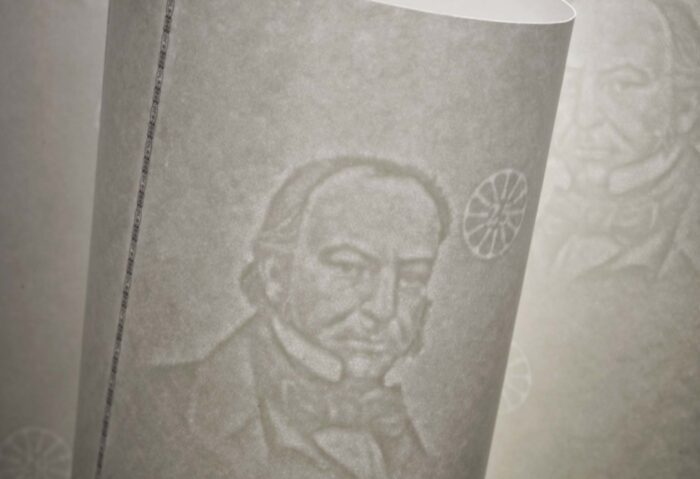
Watermarked security papers represent a critical element in document protection. These papers are not just regular sheets; they are engineered to include distinctive marks, often invisible to the naked eye, that validate authenticity. In a world where document forgery is a rising concern, these papers play a pivotal role.
The purpose of this blog post is to unveil the mystery behind watermarked security papers, exploring their types, history, importance, and the technology behind them. We will delve into how these papers work, their applications, advantages, and even their limitations.

What is a Watermark?
A watermark is a unique feature embedded within the structure of paper, visible under certain conditions. It’s not a surface print; instead, it’s an integral part of the paper itself, created during the paper manufacturing process. Watermarks often carry distinctive designs, logos, or patterns, identifying the authenticity and origin of the paper.
Initially, watermarks were physical imprints made by wire patterns on the paper mould. Nowadays, they have evolved into sophisticated designs that can be visible, semi-visible, or completely invisible under normal viewing conditions, revealing themselves only under specific light or angles.
Types of Watermarks
There are various types of watermarks, each serving a specific security purpose. The two primary categories are visible and invisible watermarks. Visible watermarks are those that can be seen without any special equipment. They often appear as logos, texts, or patterns, subtly imprinted on the paper.
On the other hand, invisible watermarks are not apparent under normal conditions. Additionally, there are multi-tonal watermarks, which display different shades of intensity, and electrotype watermarks, which incorporate metallic elements for enhanced security.
Each type serves to authenticate documents uniquely and effectively.

Historical Background
The history of watermarked papers dates back to the 13th century in Italy. Initially, watermarks served as a trademark for papermakers, a symbol of craftsmanship and authenticity.
However, as the need for document security grew, watermarks evolved into a critical security feature. In the 19th century, with the rise of banknote printing, watermarks became a standard in currency production.
Throughout history, watermarks have adapted to the changing needs of security. They have transformed from simple wire marks to intricate designs and patterns, incorporating modern technology.
How Watermarked Security Papers Work
Watermarked security papers work through a meticulous manufacturing process. The watermark is created during the papermaking phase, where a dandy roll—a wire cylinder with the watermark pattern—is pressed onto the wet paper pulp.
This process alters the paper’s thickness and density, creating a watermark that is integral to the paper. The complexity of the design and the precision of the embedding process make these watermarks difficult to replicate accurately by forgers.
The paper’s thickness varies subtly in the watermark area, creating a distinctive pattern that can be seen when held against the light. Some advanced watermarks incorporate fluorescent elements, visible only under ultraviolet light.

Importance in Document Protection
Watermarked security papers are essential in document protection. They offer a reliable way to authenticate documents and prevent fraud. In an era where digital forgery and counterfeiting are rampant, these papers provide a physical level of security that is difficult to breach.
Watermarks are particularly crucial for documents of high importance or value, such as government documents, banknotes, and academic certificates. The presence of a watermark significantly deters counterfeiters, as replicating these intricate marks accurately is exceptionally challenging.
Authentication and Verification
Watermarks are a key tool in the authentication and verification of documents. They serve as a physical proof of authenticity, a signature that cannot be easily replicated. When a document is examined, the watermark is one of the first features checked.
It reveals the paper’s origin and certifies its authenticity. Special equipment, like UV lights, can be used to reveal hidden or invisible watermarks, providing an additional layer of security.

Applications of Watermarked Security Papers
Watermarked security papers find applications in a wide array of industries and sectors. They are extensively used in currency printing, where they help in preventing counterfeiting. In the legal world, watermarks are used in official documents to ensure their legitimacy.
Even in the art world, watermarked papers help in authenticating original works and prints. Governments use them in passports, visas, and other identity documents, bolstering national security.
Advantages of Watermarked Papers
Watermarked papers offer several advantages in document protection. Their main strength lies in their high level of security. The complexity and uniqueness of watermarks make them extremely difficult to replicate, offering a robust defense against forgery.
They are also versatile; with different types of watermarks available, they can be customized to suit specific security needs. They offer a level of authenticity that digital documents cannot easily replicate.
Moreover, watermarked papers are durable and long-lasting, ensuring that the security feature remains effective over time.

Challenges and Limitations
Despite their effectiveness, watermarked security papers have challenges and limitations. One significant challenge is the cost; producing watermarked paper is more expensive than regular paper due to the complex manufacturing process.
There is also the issue of technological advancement in counterfeiting methods, which continually evolves, posing a constant threat to the effectiveness of watermarks.
Additionally, the detection of watermarks often requires specific knowledge or equipment, which might not always be available, especially in remote or less technologically advanced areas.
Furthermore, while watermarks are highly effective against duplication, they do not prevent other forms of document tampering, such as alteration or information theft.
Modern Technologies and Watermarking
Modern technologies have significantly enhanced the effectiveness of watermarked security papers. Advances in digital imaging and printing have allowed for more complex and intricate watermark designs, which are nearly impossible to replicate accurately.
The integration of fluorescent and holographic elements in watermarks has added an extra layer of security, visible only under specific conditions. There’s also a growing trend of combining watermarks with other security features, like microprinting and security threads, for multi-layered document protection.
Additionally, the use of digital watermarks, embedded in electronic documents, extends the concept beyond paper, offering digital document protection.

Conclusion
Watermarked security papers stand as a bastion in the realm of document protection. From their historical origins to modern applications, they represent a blend of art, science, and technology, continually evolving to counter the threats of forgery and fraud.
Their importance in authenticating and verifying documents across various sectors is undeniable. While they face challenges and limitations, the ongoing technological advancements in watermarking ensure that they remain an effective and reliable security measure.











